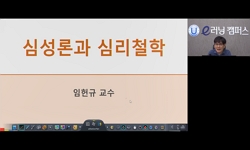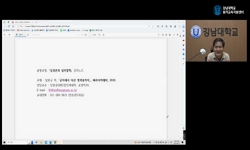배경 및 목적: 본 연구는 고기능 자폐 아동과 일반 아동의 질문유형 및 자극유형에 따른 아이러니 이해 능력을 살펴보고, 마음이론과 아이러니 이해 능력의 상관관계를 확인하고자 하였다. ...
http://chineseinput.net/에서 pinyin(병음)방식으로 중국어를 변환할 수 있습니다.
변환된 중국어를 복사하여 사용하시면 됩니다.
- 中文 을 입력하시려면 zhongwen을 입력하시고 space를누르시면됩니다.
- 北京 을 입력하시려면 beijing을 입력하시고 space를 누르시면 됩니다.


초등학교 저학년 고기능 자폐 아동의 질문유형 및 자극유형에 따른 아이러니 이해 능력과 마음이론과의 관계 = Irony Comprehension in High-Functioning ASD Children according to Question Types and Task Types and Relationships between ToM and Irony Ability
한글로보기https://www.riss.kr/link?id=A107334932
- 저자
- 발행기관
- 학술지명
- 권호사항
-
발행연도
2021
-
작성언어
Korean
-
주제어
아이러니 ; 고기능 자폐 아동 ; 마음이론 ; Irony ; High functioning ASD ; Theory of Mind
-
등재정보
KCI등재,SCOPUS,ESCI
-
자료형태
학술저널
- 발행기관 URL
-
수록면
96-107(12쪽)
-
KCI 피인용횟수
0
- 제공처
-
0
상세조회 -
0
다운로드
부가정보
국문 초록 (Abstract)
배경 및 목적: 본 연구는 고기능 자폐 아동과 일반 아동의 질문유형 및 자극유형에 따른 아이러니 이해 능력을 살펴보고, 마음이론과 아이러니 이해 능력의 상관관계를 확인하고자 하였다. 방법: 연구대상은 초등학교 저학년에 해당하는 만 7-9세 사이의 고기능 자폐 아동 12명과 연령 및 수용어휘력, 구문이해력 등을 일치시킨 일반 아동 12명이었다. 아이러니 과제는 총 28문항으로, 개방형 14문항과 선택형 14문항으로 이루어졌으며, 이 두 가지 질문유형에는 각각 내레이션 자극 7문항과 만화 자극 7문항으로 구성되었다. 마음이론 과제는 총 5개의 이야기로 구성하였다. 결과: 고기능 자폐 아동 집단은 일반 아동 집단에 비해 유의하게 낮은 아이러니 이해 능력을 보였으며, 특히 선택형에 비해 개방형에서 더 낮은 수행을 나타냈다. 두 그룹 모두 자극 간 차이는 유의하지 않았다. 마음이론과 아이러니 능력 간의 상관관계는 고기능 자폐 아동 집단에서만 유의하였다. 논의 및 결론: 고기능 자폐 아동은 아이러니를 이해하는 능력이 일반 아동에 비해 부족함을 나타내었고, 특히 구어 능력을 요구하는 개방형에서 어려움을 보인다는 것을 알 수 있었다. 또한 고기능 자폐 아동의 타인에 대한 감정과 의도를 파악하는 능력, 즉 마음이론 능력이 아이러니 이해 능력과 연관성이 있다는 것을 알 수 있다.
참고문헌 (Reference)
1 김영태, "한국아동 메타-화용언어검사(KOPLAC)의 개발: 타당도와 신뢰도 분석" 한국언어청각임상학회 23 (23): 94-108, 2018
2 김혜리, "학령기와 그 이후의 마음이해 발달: 애매한 상황에서의 마음읽기 능력" 한국심리학회 산하 한국발달심리학회 20 (20): 21-49, 2007
3 정혜승, "초등학생의 은유와 아이러니 이해 양상" 한국초등국어교육학회 (35) : 243-265, 2007
4 정진나, "과제의 단순화가 이차순위 틀린 믿음 이해의 발달에 미치는 영향" 한국심리학회 산하 한국발달심리학회 24 (24): 19-39, 2011
5 이진연, "고기능 자폐아동의 반어적 표현 이해 특성" 한국정서행동장애학회 30 (30): 273-289, 2014
6 Ackerman, B. P., "Young children’s understanding of a speaker’s intentional use of a false utterance" 17 (17): 472-480, 1981
7 Happe’, F. G. E., "Understanding minds and metaphors; insights from the study of figurative language in autism" 10 (10): 275-295, 1995
8 Caillies, S., "Theory of mind and irony comprehension in children with cerebral palsy" 33 (33): 1380-1388, 2012
9 Lee, K. Y, "Theory of mind and executive function during middle childhood" Ewha Womans University 2018
10 Kim, Y. T., "The speech-language characteristics of the autistic Children" 30 (30): 67-86, 1999
1 김영태, "한국아동 메타-화용언어검사(KOPLAC)의 개발: 타당도와 신뢰도 분석" 한국언어청각임상학회 23 (23): 94-108, 2018
2 김혜리, "학령기와 그 이후의 마음이해 발달: 애매한 상황에서의 마음읽기 능력" 한국심리학회 산하 한국발달심리학회 20 (20): 21-49, 2007
3 정혜승, "초등학생의 은유와 아이러니 이해 양상" 한국초등국어교육학회 (35) : 243-265, 2007
4 정진나, "과제의 단순화가 이차순위 틀린 믿음 이해의 발달에 미치는 영향" 한국심리학회 산하 한국발달심리학회 24 (24): 19-39, 2011
5 이진연, "고기능 자폐아동의 반어적 표현 이해 특성" 한국정서행동장애학회 30 (30): 273-289, 2014
6 Ackerman, B. P., "Young children’s understanding of a speaker’s intentional use of a false utterance" 17 (17): 472-480, 1981
7 Happe’, F. G. E., "Understanding minds and metaphors; insights from the study of figurative language in autism" 10 (10): 275-295, 1995
8 Caillies, S., "Theory of mind and irony comprehension in children with cerebral palsy" 33 (33): 1380-1388, 2012
9 Lee, K. Y, "Theory of mind and executive function during middle childhood" Ewha Womans University 2018
10 Kim, Y. T., "The speech-language characteristics of the autistic Children" 30 (30): 67-86, 1999
11 Milosky, L., "The role of prosody in children’s inference of ironic intent" 23 (23): 47-61, 1997
12 Adachi, T., "The metaphor and sarcasm scenario test : a new instrument to help differentiate high functioning pervasive developmental disorder from attention deficit/hyperactivity disorder" 26 (26): 301-306, 2004
13 Kim, J. Y, "The effect of theory of mind on peer competence in early school-aged children : the moderating effect of empathy" Ewha Womans University 2017
14 Panzeri, F., "The comprehension of ironic criticisms and ironic compliments in individuals with Down syndrome : adding another piece to the puzzle" 156 : 223-234, 2019
15 Cutler, A., "The comparative perspective on spoken-language processing" 21 (21): 3-15, 1997
16 Wellman, H. M., "The child’s theory of mind" MIT press 1990
17 Kim, Y. T., "Receptive & Expressive Vocabulary Test(REVT)" Seoul Community Rehabilitation Center 2009
18 McCann, J., "Prosody and its relationship to language in school-aged children with high-functioning autism" 42 (42): 682-702, 2007
19 Pexman, P. M., "Processing of ironic language in children with high-functioning autism spectrum disorder" 41 (41): 1097-1112, 2011
20 Glenwright, M., "Older children and adolescents with high-functioning autism spectrum disorders can comprehend verbal irony in computer-mediated communication" 6 (6): 628-638, 2012
21 Wang, A. T., "Neural basis of irony comprehension in children with autism : the role of prosody and context" 129 (129): 932-943, 2006
22 Collins, A., "Metapragmatic explicitation ability in children with typical language development : development and validation of a novel clinical assessment" 52 : 31-43, 2014
23 Baron-Cohen, S., "Mechanical, behavioural and intentional understanding of picture stories in autistic children" 4 (4): 113-125, 1986
24 Pae, S., "Korean Oral Syntax Expression Comprehension Test(KOSECT)" Seoul Community Rehabilitation Center 2004
25 Park, H. W., "Korean Comprehensive Test of Nonverbal Intelligence-2(K-CTONI-2)" Mindpress 2014
26 Pexman, P. M., "It’s fascinating research : the cognition of verbal irony" 17 : 287-290, 2008
27 Gibbs, R. W., "Irony in talk among friends" 15 (15): 5-27, 2000
28 Saban-Bezalel, R., "Irony comprehension and mentalizing ability in children with and without autism spectrum disorder" 58 : 30-38, 2019
29 Kim, J. W, "Irony Comprehension of High-Functioning Autistic children According to the Presence of Pragmatic prosody" Ewha Womans University 2015
30 Dennis, M., "Inferential language in high-function children with autism" 31 (31): 47-54, 2001
31 Whyte, E. M., "Idiom, syntax, and advanced theory of mind abilities in children with autism spectrum disorders" 57 (57): 120-130, 2014
32 Pexman, P. M., "How do typically developing children grasp the meaning of verbal irony" 20 (20): 178-196, 2007
33 Sullivan, K., "How children tell a lie from a joke : the role of second-order mental state attributions" 13 (13): 191-204, 1995
34 Filippova, E., "Further development in social reasoning revealed in discourse irony understanding" 79 (79): 126-138, 2008
35 Norbury, C. F., "Factors supporting idiom comprehension in children with communication disorders" 47 (47): 1179-1193, 2004
36 Peppé, S., "Expressive prosody in children with autism spectrum conditions" 24 (24): 41-53, 2011
37 Huang, S., "Comprehension of figurative language in Taiwanese children with autism: the role of theory of mind and receptive vocabulary" 29 (29): 764-775, 2015
38 황현주, "Comprehension of Indirect Pragmatic Expressions Depending on the Presence of Facial Expressions in High-Functioning Autistic Children" 한국언어청각임상학회 22 (22): 705-716, 2017
39 Dews, S., "Children’s understanding of the meaning and functions of verbal irony" 67 (67): 3071-3085, 1996
40 Banasik, N., "Children’s comprehension of irony : studies on polish-speaking preschoolers" 48 (48): 1217-1240, 2019
41 Frith, U., "Autism : explaining the enigma" Blackwell 1989
42 Colich, N. L., "Atypical neural processing of ironic and sincere remarks in children and adolescents with autism spectrum disorder" 27 (27): 70-92, 2012
43 Loukusa, S., "Answering contextually demanding questions : pragmatic errors produced by children with Asperger syndrome or high-functioning autism" 40 (40): 357-381, 2007
44 Happé, F. G. E., "An advanced test of theory of mind : understanding of story characters’ thoughts and feelings by able autistic, mentally handicapped, and normal children and adults" 24 (24): 129-154, 1994
45 Joliffe, T., "A test of central coherence theory : linguistic processing in high-functioning adults with autism or Asperger syndrome : is local coherence impaired" 71 (71): 149-185, 1999
46 Kaland, N., "A new ‘advanced’ test of theory of mind : evidence from children and adolescents with Asperger syndrome" 43 (43): 517-528, 2002
47 Mackay, G., "A comparative study of figurative language in children with autistic spectrum disorders" 20 (20): 13-32, 2004
48 Perner, J., ""John thinks that Mary thinks that. . . "attribution of second-order beliefs by 5-to 10-year-old children" 39 (39): 437-471, 1985
동일학술지(권/호) 다른 논문
-
단순언어장애 아동 및 일반아동의 사회성 기술 및 집행기능과 이야기 이해 능력 간의 관계
- 한국언어청각임상학회
- 문주희
- 2021
- KCI등재,SCOPUS,ESCI
-
자극유형, 시연여부, 자극길이가 말소리장애 아동과 일반 아동의 음운작업기억 과제 수행에 미치는 영향
- 한국언어청각임상학회
- 전은혜
- 2021
- KCI등재,SCOPUS,ESCI
-
실어증 환자의 점화 동사 유형에 따른 경동사 및 중동사 산출 능력 비교
- 한국언어청각임상학회
- 김규연
- 2021
- KCI등재,SCOPUS,ESCI
-
모바일 헬스케어 애플리케이션을 이용한 구강 및 인후두 근력 강화 훈련이 노년 여성의 음성에 미치는 장단기 효능
- 한국언어청각임상학회
- 조남빈
- 2021
- KCI등재,SCOPUS,ESCI
분석정보
인용정보 인용지수 설명보기
학술지 이력
| 연월일 | 이력구분 | 이력상세 | 등재구분 |
|---|---|---|---|
| 2018 | 평가예정 | 계속평가 신청대상(등재유지) | |
| 2015-01-01 | 평가 | 등재학술지 유지(등재유지) |  |
| 2013-03-29 | 학술지명변경 | 한글명 : Communication Sciences and Disorders</br>외국어명 : Communication Sciences and Disorders |  |
| 2012-12-18 | 학술지명변경 | 한글명 : 언어청각장애연구</br>외국어명 : Communication Sciences and Disorders |  |
| 2011-01-01 | 평가 | 등재학술지 유지(등재유지) |  |
| 2009-01-01 | 평가 | 등재학술지 유지(등재유지) |  |
| 2007-06-25 | 학술지명변경 | 한글명 : 언어청각장애연구</br>외국어명 : Korean Journal of Communication Disorders |  |
| 2007-01-01 | 평가 | 등재학술지 유지(등재유지) |  |
| 2006-09-13 | 학술지명변경 | 한글명 : 언어청각장애연구</br>외국어명 : Korean Journal of Communication Disorders |  |
| 2005-10-14 | 학술지명변경 | 한글명 : 언어청각장애연구</br>외국어명 : Korean Journal of Communication Disorders |  |
| 2004-01-01 | 평가 | 등재학술지 선정(등재후보2차) |  |
| 2003-01-01 | 평가 | 등재후보 1차 PASS(등재후보1차) |  |
| 2001-07-01 | 평가 | 등재후보학술지 선정(신규평가) |  |
학술지 인용정보
| 기준연도 | WOS-KCI 통합IF(2년) | KCIF(2년) | KCIF(3년) |
|---|---|---|---|
| 2016 | 1.13 | 1.13 | 1.17 |
| KCIF(4년) | KCIF(5년) | 중심성지수(3년) | 즉시성지수 |
| 1.21 | 1.18 | 1.626 | 0.33 |





 KCI
KCI





